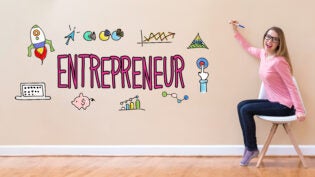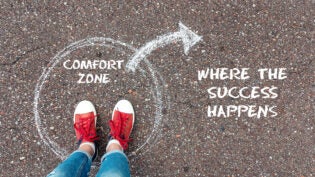Home > Startup > Personal Readiness >
How to Create a Full-Color, Full-Contact Body of Work, Courtesy of Beyonce
By: Pamela Slim

Much to the Internet’s amazement last week, without any prior buzz or warning, Beyoncé dropped a brand new album straight to iTunes, complete with 10 brand new videos.
She said:
“I see music. It is more than just what I hear. When I connect to something, I immediately see a visual. Or a series of images that are tied to a feeling or emotion, a memory from my childhood, my dreams, my fantasies. And they are all connected to the music. And I think that is one of the reasons why I wanted to do a visual album. I wanted people to hear the songs with the story that’s in my head because that is what makes it mine. That vision in my head is what I wanted people to experience the first time.”
She goes on to say:
“I wanted to make this body of work. And I feel it is something that is lost in pop music. I wanted people to hear things differently and have a different experience … It was important that we made this a movie, made this an experience. I wanted everyone to see the whole picture and see how personal it is to me.
I will make my best art, and just put it out. That is why it is out today.”
All I have to say to this is YES, YES, YES! Whether or not you are a fan of her music, Beyoncé demonstrated the true spirit of the creative process: sharing a fully narrated, full-color and full contact piece of her body of work.
Mixing Mediums
Brené Brown also recently shared an amazing mash-up of powerful spoken words (her speech on empathy at the Royal Society for the Encouragement of Arts) with illustrations by artist Katy Davis. The result creates a new and deeper, richer message, which is much more than the sum of its two parts (great words + great illustration). With these mixed mediums, you understand the story on a much deeper level.
Full Contact Spurs Action
Andia Winslow demonstrates style, humor, and motivation in her Fit Cycle videos, intended to inspire kids and adults alike to exercise in their real lives—on the playground, in the laundrymat or walking down the street. (After watching her videos and going on a hike with Andia when she visited last weekend, my son said “I want to go hiking every weekend, Mom. And eat healthy food.” It works.)
These examples make me excited about spurring you to create and share “full-color, full-contact” stories.
Our lives are rich, interesting and multidimensional.
Our ideas are multi-sensory.
So the creative challenge becomes: how can you engage more of yourself in your work, and bring more color, sound, movement and dimension to the way you share it?
Here are some ideas:
- Choose images to accompany your writing. Get images from Stock photo sites, take your own photos or browse free license sites to look for images that strengthen and reinforce your words.
- Choose soundtracks. Use music to help narrate your day, enliven your events and warm up your web communication. (This makes me think of my recent trip to Philadelphia where I walked through the rain for miles with the Rocky theme song in my head, slowly winding my way to the “Rocky Stairs,” which I ran up triumphantly singing in my head “Gonna fly now, Flying high now …”)
- Incorporate movement. Find ways to move more throughout your day. Learn Tango, Tai Chi, hiking, fencing, football, or anything that makes your body feel alive. Incorporate movement into your work with clients, your meetings and your holiday parties.
- Clear unnecessary clutter from your surroundings. Have you noticed that when you are surrounded by stuff, you don’t really see the beauty of a room? Or when you visit a website that is full of buttons, boxes and images that you don’t know what to do? Remove excess stuff so you can display your ideas clearly. Look at a beautiful example from my friend, minimalist Colin Wright: http://colin.io/
- Add video. You may not have Beyoncé’s production team or budget, but you can tell amazing stories with a video camera. Look to Abe Cajudo for ideas.
Isabelle Allende says it beautifully in Portrait of Sepia (which is why I lead Chapter 9 with her quote):
“Each of us chooses the tone for telling his or her own story. I would like to choose the durable clarity of a platinum print, but nothing in my destiny possesses the luminosity. I live among diffuse shadows, veiled mysteries, uncertainties; the tone of telling my life is closer to that of a portrait in sepia.”
Take a cue from Mrs. Carter: Make your best art and just put it out.
This article was originally published by Escape from Cubicle Nation
Published: December 19, 2013
2730 Views
2730 Views












